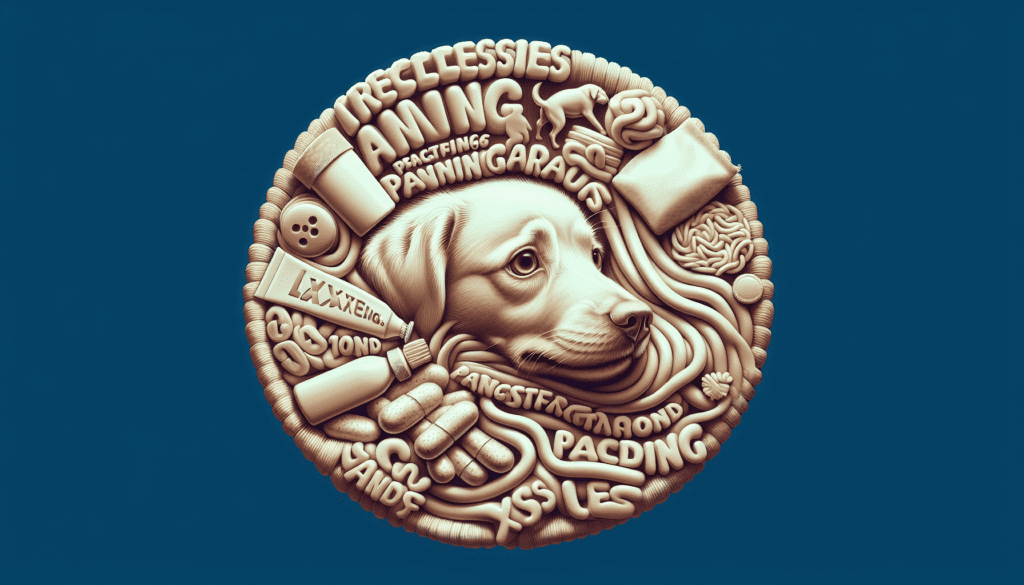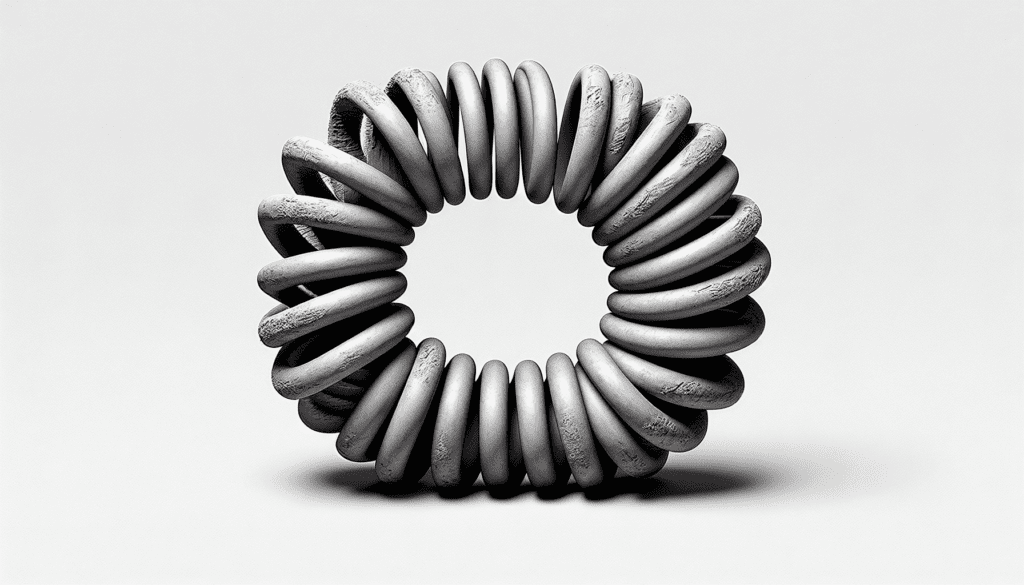Dealing with anxiety-related behaviors in your dog, such as pacing or panting, can be a challenging ordeal for any pet owner. However, by understanding the underlying causes of these behaviors and implementing effective techniques, you can help alleviate your furry friend’s anxiety and create a more calm and peaceful environment for both of you. In this article, we will explore some simple yet powerful strategies that you can employ to address anxiety-related behaviors in your beloved canine companion, ensuring their well-being and happiness. So, let’s dive in and discover how you can tackle this common issue, one wagging tail at a time!
Understanding anxiety-related behaviors
Anxiety-related behaviors can manifest in dogs in various ways. It is important to understand the causes and common behaviors associated with anxiety in order to effectively address them and provide comfort and support to your furry friend.
Causes of anxiety in dogs
There are several factors that can contribute to anxiety in dogs. Some common causes include past traumatic experiences, separation anxiety, fear of specific stimuli (such as loud noises or certain objects), changes in the environment or routine, lack of socialization, and medical conditions. Identifying the root cause of your dog’s anxiety is crucial in determining the most appropriate approach to managing their symptoms.
Common anxiety-related behaviors
Anxiety in dogs can manifest through a range of behaviors. Two common manifestations of anxiety are pacing and panting. These behaviors are often an indication that your dog is feeling stressed, uncomfortable, or fearful.
Identifying pacing behavior
Pacing is characterized by repetitive and purposeless movement, typically back and forth or in circles. It can occur in both indoor and outdoor settings. Pacing may be accompanied by other signs of anxiety, such as restlessness, trembling, or avoiding eye contact. Observing your dog’s pacing behavior can provide valuable insights into their emotional state.

This image is property of pixabay.com.
Recognizing panting as a sign of anxiety
Panting is a natural way for dogs to regulate their body temperature, but it can also be a sign of anxiety. When a dog is feeling anxious, their panting may become excessive or more rapid than usual. Other signs of anxiety-related panting include dilated pupils, increased heart rate, and tension in the body. Being able to recognize panting as a possible indication of anxiety can help you address your dog’s needs more effectively.
Determining triggers and situations
Identifying the triggers and situations that provoke anxiety in your dog is essential for managing their anxiety-related behaviors. By understanding what sets off their anxiety, you can take proactive steps to minimize exposure or tailor interventions accordingly.
Identifying potential triggers
Take note of any specific situations, objects, sounds, or people that consistently trigger anxious behaviors in your dog. Common triggers may include thunderstorms, fireworks, car rides, unfamiliar visitors, or certain household appliances. By identifying these triggers, you can better prepare your dog and implement strategies to mitigate their anxiety in these situations.
Recognizing situational anxiety
Some dogs may experience anxiety in certain situations, such as going to the veterinarian or being left alone at home. This type of anxiety, known as situational anxiety, is often predictable and can be managed through specific interventions. Recognizing when your dog is experiencing situational anxiety will allow you to provide them with the necessary support and potentially help prevent the escalation of their anxious behaviors.

This image is property of pixabay.com.
Creating a calm environment
Creating a calm and soothing environment for your dog can go a long way in alleviating their anxiety. By implementing a few simple strategies, you can significantly reduce their stress levels and help them feel more secure in their surroundings.
Providing a safe space for your dog
Designate a specific space in your home where your dog can retreat to when they are feeling anxious. This can be a crate, a comfortable bed, or a quiet room with minimal distractions. Ensure that this space is always accessible to your dog and that they associate it with safety and relaxation.
Reducing noise and stimuli
Loud noises and excessive stimuli can exacerbate anxiety in dogs. Minimize external disturbances by keeping windows closed during noisy events, using white noise machines to drown out loud sounds, and providing your dog with a safe and quiet area away from the hustle and bustle of everyday life.
Establishing a routine
Dogs thrive on routine and predictability. Establishing a consistent daily routine can help reduce anxiety by providing structure and familiarity. Aim to feed your dog, walk them, and engage in playtime at regular intervals throughout the day. Predictability can help your dog feel more secure and less susceptible to anxiety-related behaviors.
Behavioral training techniques
Behavioral training techniques can be incredibly effective in managing anxiety-related behaviors in dogs. These techniques focus on changing your dog’s emotional response to triggers, helping them develop a more positive outlook and coping mechanisms.
Counterconditioning
Counterconditioning involves pairing the anxious stimulus or trigger with something positive and rewarding for your dog. For example, if your dog is afraid of thunderstorms, you can play calming music or use a white noise machine while offering treats or engaging them in a fun activity. Over time, this can help your dog associate the trigger with positive experiences and reduce their anxiety.
Desensitization
Desensitization involves gradually exposing your dog to their anxiety triggers in a controlled and systematic manner. By exposing them to the trigger at a low intensity and gradually increasing the exposure over time, you can help your dog become desensitized to the trigger and reduce their anxiety response. It is important to proceed at a pace that is comfortable for your dog to ensure their emotional well-being.
Positive reinforcement
Positive reinforcement is an effective training technique that involves rewarding desired behaviors with treats, praise, or play. By rewarding your dog for calm and relaxed behaviors, you can reinforce positive emotional states and help them associate those behaviors with positive experiences. This can aid in reducing anxiety-related behaviors and promoting a sense of security and confidence.

Engaging in physical activities and mental stimulation
Regular physical activities and mental stimulation are essential components of managing anxiety in dogs. Both exercise and mental enrichment can help divert their attention from anxious thoughts and provide a healthy outlet for their energy.
Regular exercise
Regular exercise is crucial for maintaining your dog’s overall well-being and can significantly reduce anxiety-related behaviors. Engage your dog in daily walks, runs, or play sessions, depending on their age, breed, and health condition. Exercise releases endorphins and promotes relaxation, which can help alleviate anxiety and reduce stress levels.
Mental enrichment toys and puzzles
Mental enrichment toys and puzzles can keep your dog’s mind occupied and stimulated, diverting their attention from anxiety-inducing triggers. Interactive toys that dispense treats or require problem-solving can provide mental exercise and keep your dog engaged. These toys can be especially beneficial when you are away from home or unable to actively engage with your dog.
Training sessions
Regular training sessions not only help your dog learn important commands but also provide mental stimulation and foster a strong bond between you and your furry friend. Training activities challenge your dog’s cognitive abilities, boost their confidence, and redirect their focus away from anxiety. Incorporating short training sessions into your daily routine can effectively manage anxiety-related behaviors.
Utilizing relaxation techniques
Relaxation techniques can be invaluable in calming anxious dogs and promoting a sense of peace and tranquility.
Calming music
Calming music specifically designed for dogs can have a soothing effect on their nervous system. Soft melodies, gentle rhythms, and ambient sounds can help drown out external noises and create a calming environment for your dog.
Massage or gentle touch
Massaging your dog or gently stroking their fur can release tension and promote relaxation. Slow, rhythmic strokes along their back or a gentle belly rub can help reduce anxiety by triggering the release of endorphins and promoting a sense of well-being. It is important to ensure that your dog is comfortable with touch and to respect their boundaries.
Aromatherapy
Certain scents, such as lavender or chamomile, can have a calming effect on dogs. Using aromatherapy products specifically formulated for dogs or placing a few drops of pet-safe essential oils on a bandana or around their bedding can help create a soothing and stress-reducing environment.

Implementing anxiety-reducing aids
Various anxiety-reducing aids are available in the market that can provide additional support in managing your dog’s anxiety.
Thundershirts or anxiety wraps
Thundershirts or anxiety wraps are snug-fitting garments that provide gentle pressure around your dog’s body. This pressure can have a calming effect similar to swaddling an infant, providing a sense of security and reducing anxiety-related behaviors.
Adaptil (formerly known as DAP)
Adaptil is a synthetic pheromone product that mimics the natural pheromones emitted by mother dogs to comfort their puppies. It comes in the form of diffusers, sprays, or collars and can be used to create a calming environment and alleviate anxiety in dogs.
Calming supplements or medications (under veterinary guidance)
In some cases, your veterinarian may recommend the use of calming supplements or medications to manage your dog’s anxiety. These may include natural remedies such as herbal supplements or more potent pharmaceuticals. It is important to consult your veterinarian before administering any supplements or medications to ensure their safety and effectiveness.
Seeking professional help
If your dog’s anxiety-related behaviors persist or worsen despite your best efforts, it may be beneficial to seek professional help.
Consulting a veterinarian or veterinary behaviorist
A veterinarian or a veterinary behaviorist has the expertise to evaluate your dog’s specific situation and develop a tailored treatment plan. They can conduct a thorough assessment, rule out any underlying medical conditions, and prescribe appropriate medications or therapies to manage your dog’s anxiety.
Considering behavioral therapy
Working with a professional dog trainer or certified behaviorist who specializes in anxiety-related behaviors can be highly beneficial. They can provide guidance, support, and specific techniques to modify your dog’s behavior, address their anxiety triggers, and help them develop healthier coping mechanisms. Behavioral therapy can be particularly effective for dogs with severe anxiety or complex cases.
Avoiding punishment and negative reinforcement
When addressing anxiety-related behaviors in your dog, it is crucial to avoid punishment and negative reinforcement. Using punitive methods or scolding your dog for displaying anxious behaviors can worsen their anxiety, erode trust, and lead to further behavioral issues.
Negative effects of punishment
Punishment can increase your dog’s fear and anxiety, contributing to a negative cycle of anxious behaviors. It can also damage the bond and trust between you and your dog, hindering their progress in overcoming anxiety-related challenges. Instead of focusing on punishment, it is crucial to emphasize positive reinforcement and provide support and understanding to help your dog manage their anxiety.
Positive reinforcement versus punishment
Positive reinforcement is a powerful tool in modifying behavior and promoting emotional well-being. By rewarding desired behaviors and providing praise, treats, or play, you can encourage your dog to exhibit calm and relaxed behaviors and reinforce positive coping strategies. Focusing on positive reinforcement creates a supportive and loving environment for your dog to thrive while managing their anxiety.
In conclusion, understanding anxiety-related behaviors in dogs is essential for providing them with the care and support they need. By identifying the causes, recognizing common behaviors, and implementing various strategies outlined, you can help your furry companion lead a happier and more relaxed life. Remember to be patient, consistent, and always consult with professionals when necessary. With your love and dedication, you can make a significant difference in your dog’s well-being and help them overcome their anxiety.

